Learn how to make gradient yarns at home with these step by step video instructions for DYI gradient yarn.
In this article, I attached a few videos showing the process of preparing a simple dye vat with batik dye and dyeing a skein and a small cake of DK weight cotton yarn.
You can dye yarn in a near-gradient by using the method I’m showing below, with lots of speckles.
Try it with two colors, if you’re feeling adventurous. After dyeing the cake the first time and letting it dry, rewind it with the other end in the middle and dip it in a different color, for a cool effect.
Contents
Do you want to dye your own gradient yarn?
Are you ready for some DIY gradient yarn shenanigans? Because today we’re exploring the wonderful world of fabric dye, all in our safe homes.
If you love gradient yarns and have been meaning to try making your own projects using them, this is a great introductory experiment. Later on, you can try dyeing different fibers, using different types of dye and adding several colors at a time, or even one at a time.
I love experimenting with different natural dyes, but most of them don’t work with cotton yarn. Here are some examples of yarns that I dyed myself, with the dyestuff in the caption of each photo. Some of them were dyed in a gradient, but it takes a bit more work and a lot of experimentation.
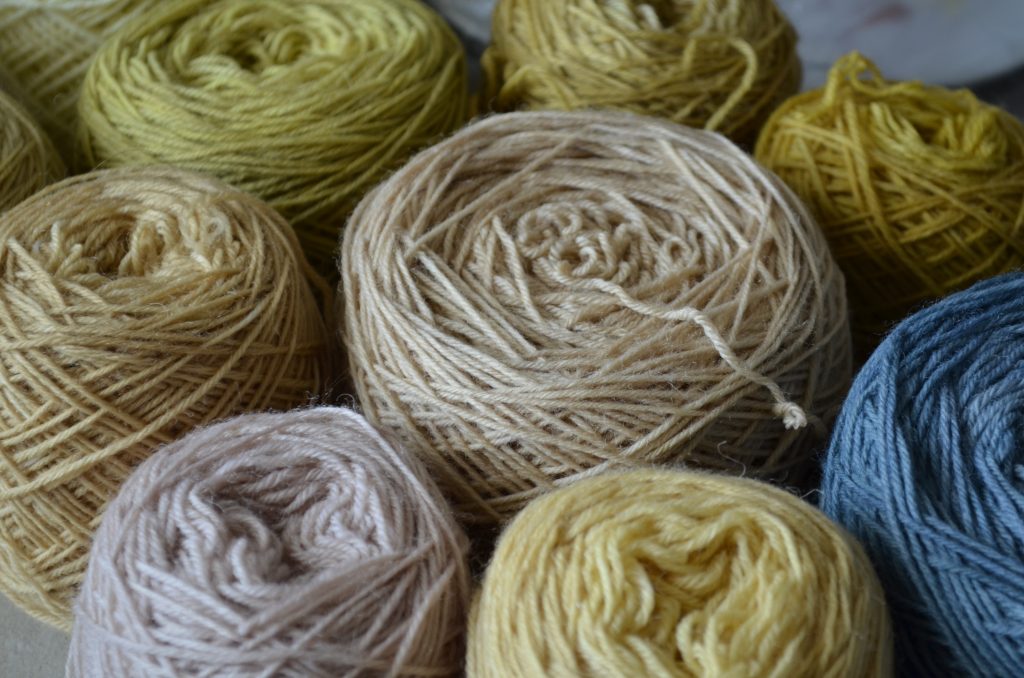
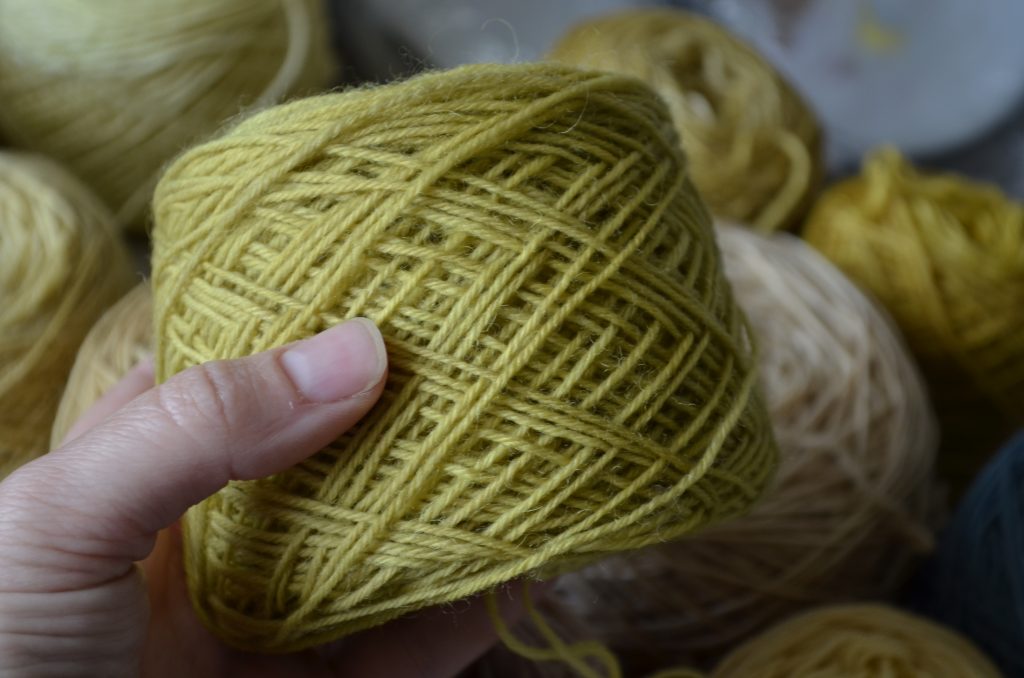
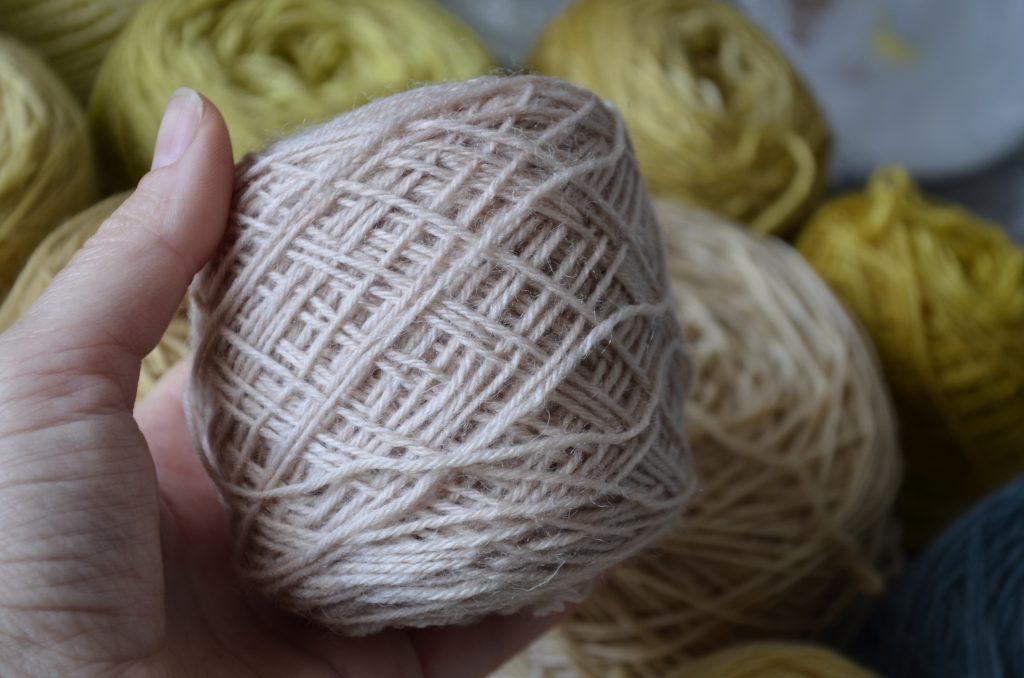
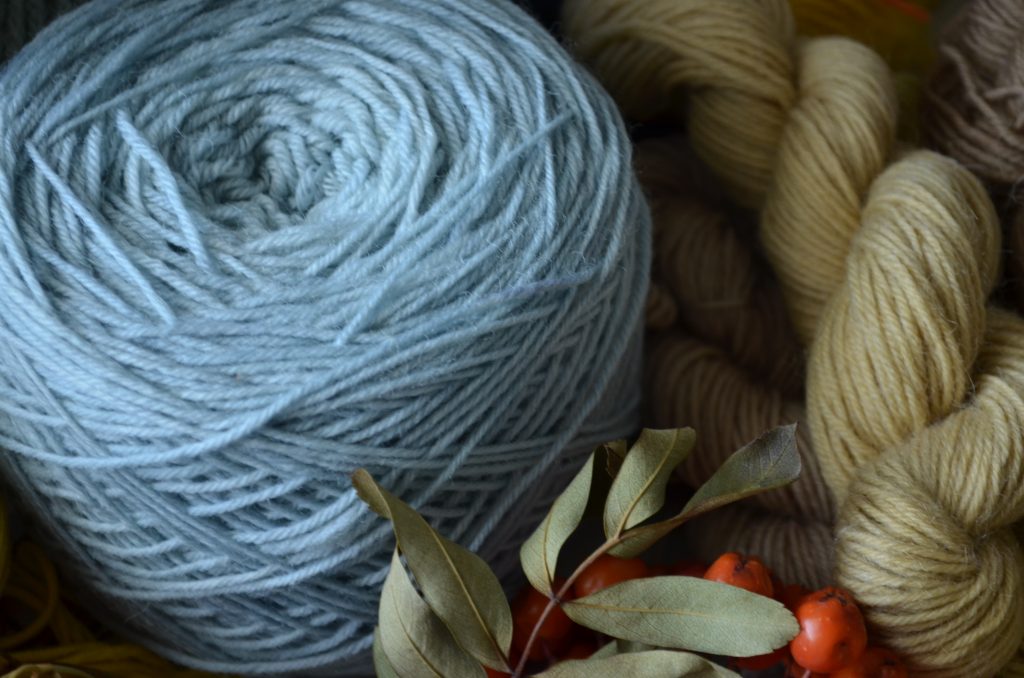
Today’s lesson is all about batik dyes
After the yarn dries, you can use it in multiple projects for yourself or to give as gifts.
You can also overdye your yarn, if you’re not happy with the colors you got.
But let’s start with the basics.
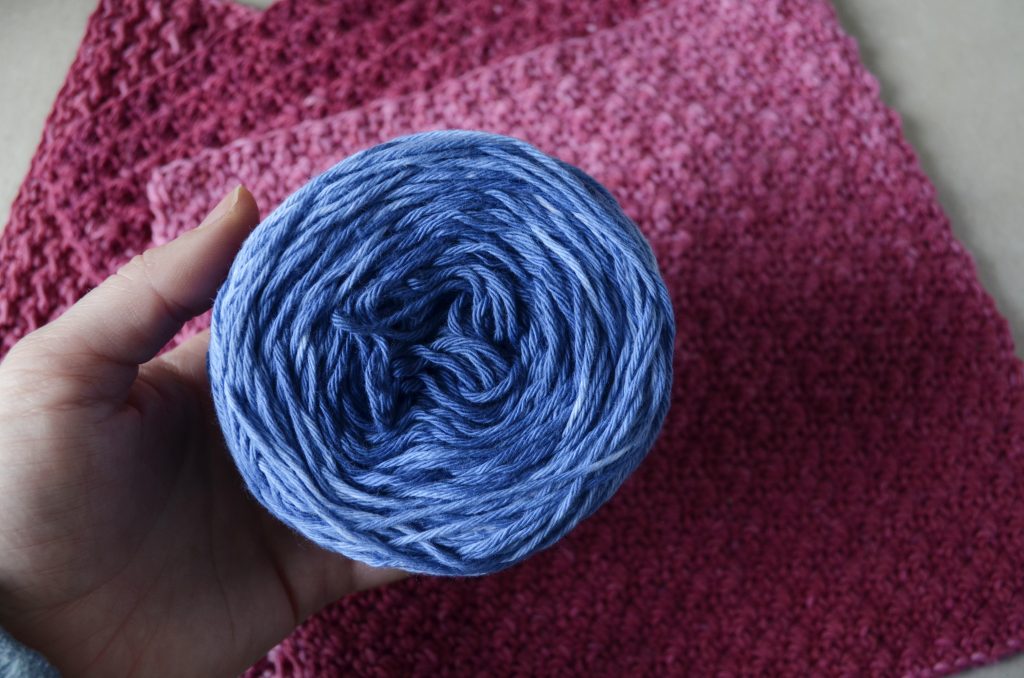
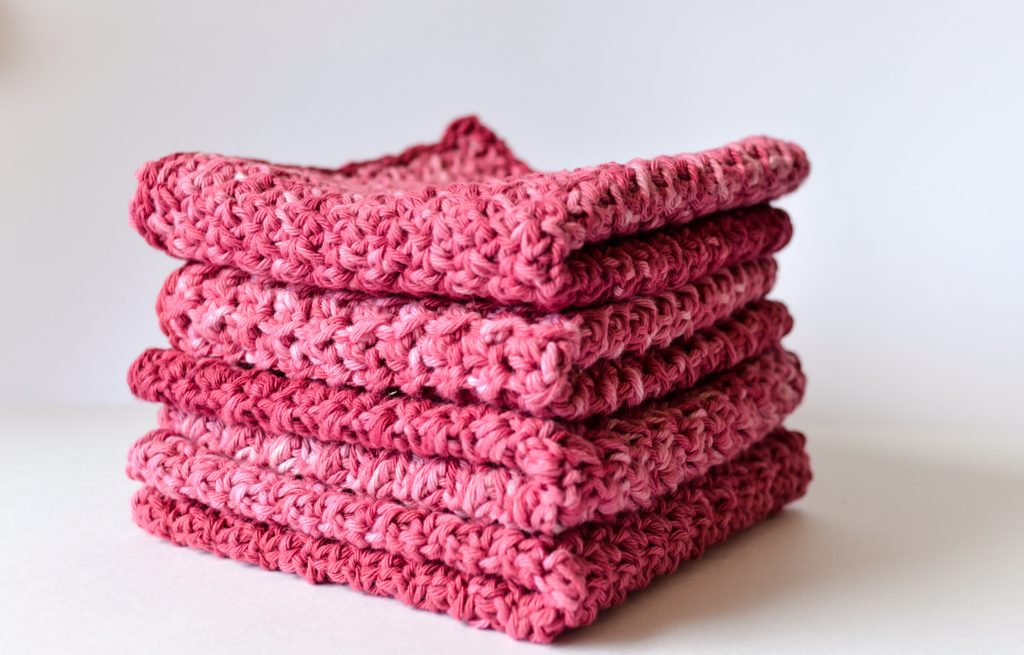
DYI gradients on cotton yarn
This post is only about dyeing with batik dye that you can find in most craft stores. It is a synthetic dye, suitable for natural fibers (works best on cotton and wool, but also dyes silk, linen, hemp and possibly other fibers).
We’re also only talking about creating a gradient in the yarn, which means that you won’t saturate the whole length of the yarn with the dye. There are a few tricks for this and I’m sharing them with you here.
Supplies for DIY gradient yarn
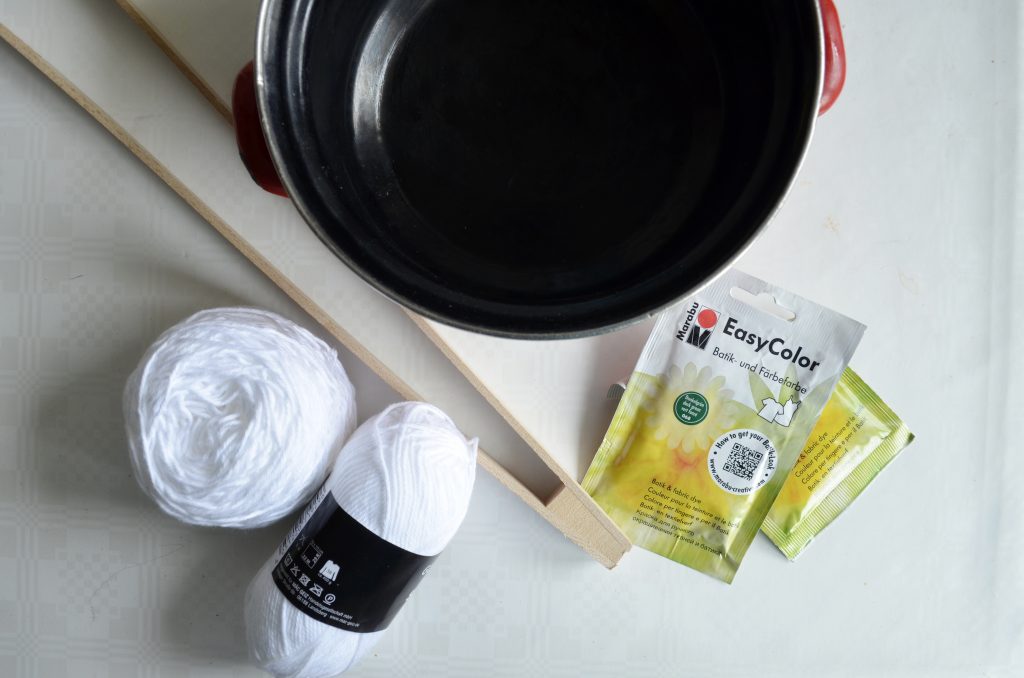
Pictured:
- Cotton yarn – 50 gram ball or several 50 gram balls of white or light colored cotton yarn
- Batik dye – less than a packet – you can find these in craft stores or online – make sure your dye is suitable for cotton
- Water and table salt – one spoon of salt per liter of water or proportions mentioned in the instructions on your dye packet
- Dye vat – you should use a dedicated pot only for dyeing (one you will no longer use for food preparation) – make sure it’s not made of aluminium
- Wooden tongs
Not pictured:
- Protective gloves – to keep the dye off your hands, although it washes out after a few days if you are not careful
- Spoon for stirring and checking for dye depletion – use a stainless steel spoon that you will no longer use for serving food
- Source of heat, such as stove top or wide burner
- Fresh water for rinsing and optionally soap for washing the yarn (but you can wash your project after you make it)
Once you have everything ready, put the kettle on and…
Prepare your materials
Before dyeing, it’s important to prepare the yarn and the solution for dyeing.
Read the instructions on the dye packet carefully and calculate how much dye powder you would need to use from the packet to get a fully saturated color. In the case of the example dye, the packet should be enough for 150 grams of cotton fabric or yarn for full saturation.
As you only want to partly saturate the yarn, to get a speckled gradient, you want to use about half of the maximum amount recommended for your yarn weight. Even less, as you will notice that fabric dye goes a long way with yarn.
For example, if you have 50 grams of dye and the packet is enough to fully saturate 150 grams of cotton, use less than a sixth of the dye packet. Even this quantity might be too much, so start with small amounts, then adjust.
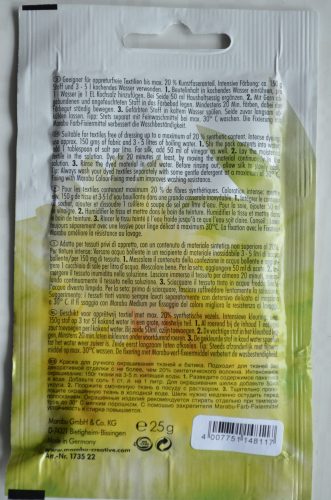
Preparing the yarn and the dye solution
Start with the water
Prepare the water for dyeing by adding enough salt (about one spoon of salt per liter of water). Have enough water in the pot to cover the yarn completely.
In the example video, there is not enough water, just to show you how the color is absorbed. More water is added later on and the yarn is completely submerged while setting the dye.
Add hot water as needed throughout the process.
Getting the yarn ready
You can use the yarn as is, in the original ball, or you can wind it in a cake using a yarn winder or wind it by hand into a ball. Either way will give similar results, just make sure you don’t wind tightly, whichever method you choose. Secure the end lightly, to make sure they will not swish around in the dye solution.
You can soak the yarn before dyeing, but it is not necessary in this case. The fact that the yarn is presoaked may or may not impact the results. You can try the two different methods (with and without soaking) and put your results in the comments.
Soaking in different solutions is extremely important when working with natural dyes or with other types of fiber, where you want to mordant your yarn before dyeing (soak it in a solution with ions from a specific metal), or when you want to create speckles in a loose skein of yarn (you wet the dye powder with the water contained in the yarn, not in the vat).
Dyeing a whole skein
Mixing the dye solution
Add the required amount of salt to the water in your dye vat (remember that you need to fully cover the yarn – make sure you also account for the water that will be absorbed into the yarn). Bring to a boil.
Prepare some hot water on the side just in case you need to add some more to your vat. If you won’t need it, just make some tea.
When the water is hot enough, reduce the heat to a simmer and add a small amount of dye. Mix well with the dye spoon and check the intensity of the color in the dye vat. If the solution is too pale, add another small amount of dye and repeat the process until you are satisfied (do not add too much from the beginning, as you will not be able to exhaust your dye solution and you will throw dye down the drain, which is not environmentally friendly!).
Soaking the yarn in the dye solution
Add your yarn to the vat, by holding it with a pair of tongs to immerse it into the solution and make sure it starts to absorb the dye solution. The dye will be absorbed first in the outer layers of yarn, then it will slowly travel inwards.
The video shows only a small amount of dye solution just for educational purposes. You will not need to turn the yarn ball around like this unless you want to.
After full saturation of the yarn with the solution, use the spoon to check the intensity of the dye solution.
- If it is completely clear, you may need to add more dye to make sure your final yarn will be saturated enough. Only add the dye to a part of the vat free of yarn (if you can, remove the ball of yarn first – without pouring hot dye solution on yourself), then mix well and then immerse the yarn again in the solution.
- If the solution has the same intensity as in the beginning, you should wait for a while until the dye travels through the yarn ball.
Keep in mind that wet yarn (and fabric in general) looks darker than the same yarn when dry.
This method is more suitable for small balls of yarn, such as this 50 gram cotton ball, because the dye doesn’t need to travel too much to reach the middle – this is why it’s so important to control the amount of dye you use.
Dyeing a cake of yarn
If you have a second ball of yarn, like the cake in the video, follow the same procedure, by immersing it in the solution with dye dissolved in it.
In the case of the cake, you want to protect the core of the cake (that will be the least saturated part), so you will begin by saturating the exterior of the cake. In this case, it helps to have less dye solution (up to about a third of the diameter of the cake) for getting the dye mostly on the outside of the cake, then topping up with hot water once most of the dye is absorbed.
You place the yarn cake on its side and roll in the solution, until it absorbs most of the dye. Then you add the extra hot water and let the cake sit in the dye solution to set.
This method is more suitable for larger amounts of yarn, rather than a single ball, as you can get a longer gradient. Make a large cake by winding up together several balls of yarn, then dye them all together for a subtler gradient.
Setting the dye – the most important step
Once the dye has been absorbed, let the yarn sit in the simmering solution for about 20 minutes or the time written in the instructions of your dye packet.
You can check the dye absorption by using the spoon – if the solution is clear or nearly clear, everything is great. If it is not, wait a while longer.
This step is extremely important because the dye needs time and high temperatures to bind to the fibers. Do not skip this step, even if you are excited to see the results!
Rinse and lay out to dry
After about 20 minutes have passed, pour off the water and rinse with cool, fresh water.
Do not squeeze the yarn with your hands, as it is full of hot water, let it cool off first!
After it cools off, you can rinse and wring it out softly and let it dry in a sunny spot, preferably on a rack.
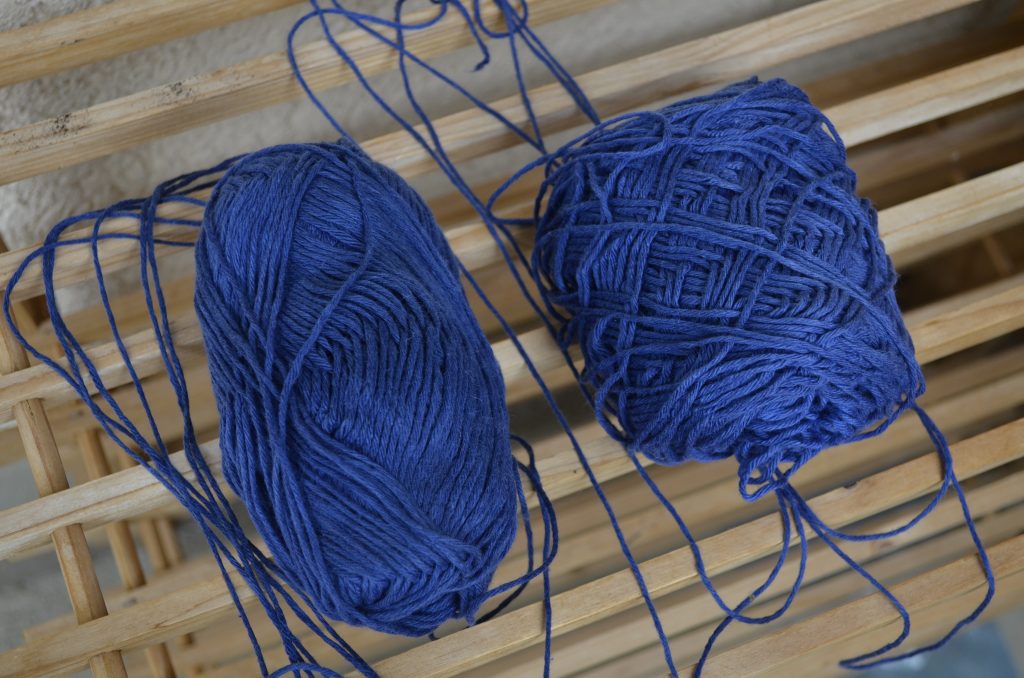
When the yarn is dry, it’s time to wind it up into a cake and start making something pretty out of it.
You can start with my free washcloth patterns, written specifically to show off the beautiful gradient of your hand-dyed yarn.
You’ll find four patterns, each of which uses exactly one skein of this kind of cotton yarn.
Final thoughts
Now that you have this technique down, you can try combining colors. Who knows what wonderful gradients you’ll come up with.
If you’ve enjoyed this post, learned something from it and want to support me, you can do so by buying a pattern for yourself or a friend.
I hope you’ll have lots of fun using this simple technique to make gorgeous hand dyed gradient yarn in your home.
Hugs,
Andrea


1 thought on “DIY gradient yarn with batik dyes”